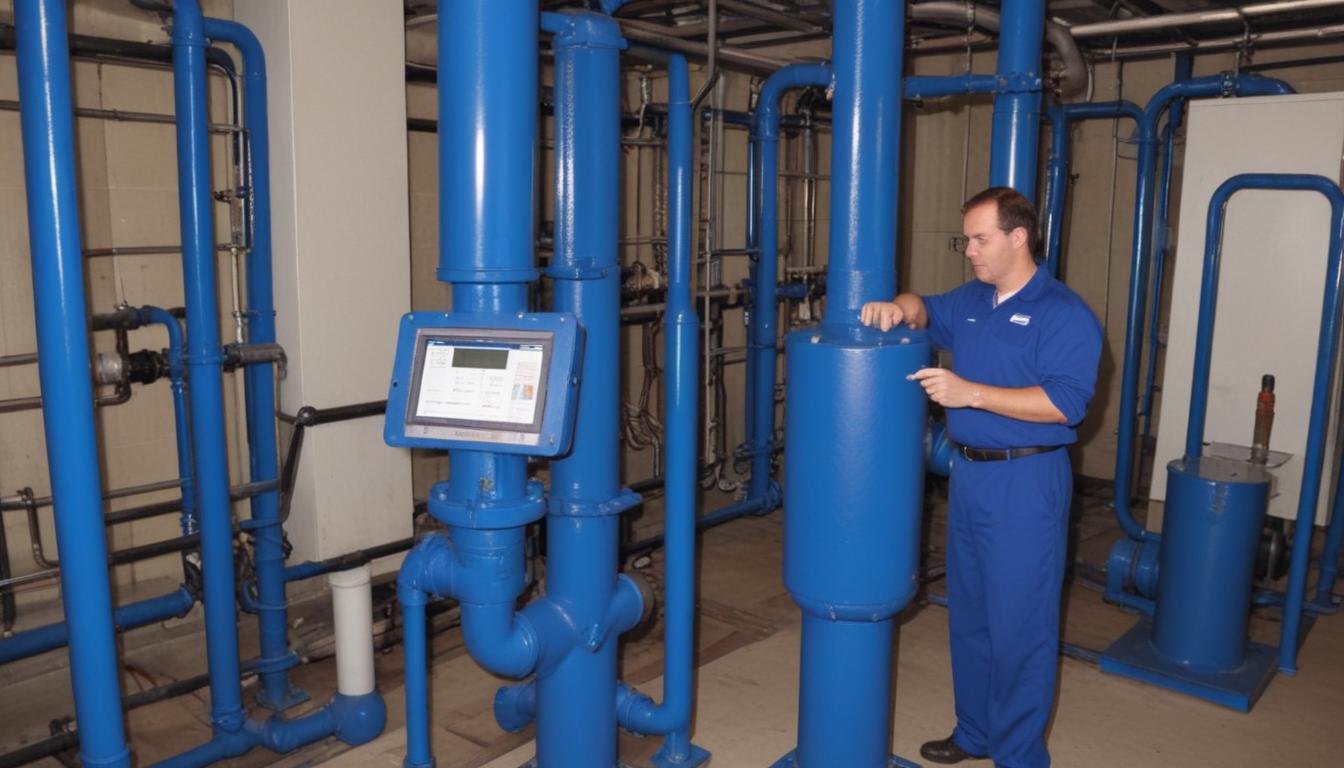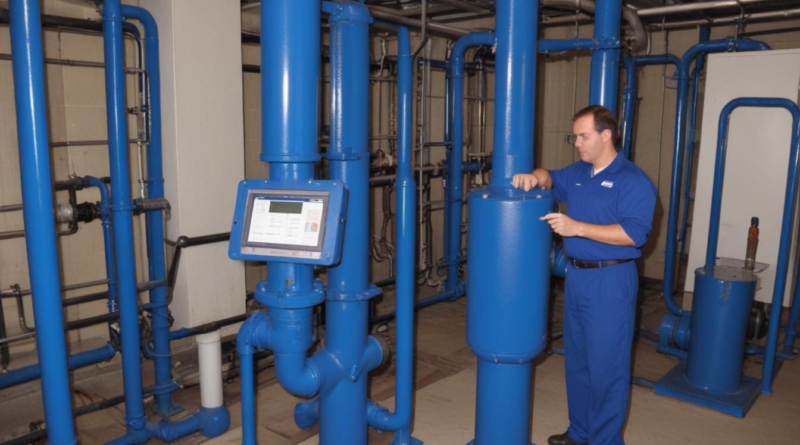how to perform pump system audits
Understanding the fundamental aspects of pump systems is critical when performing pump system audits. A pump system typically comprises various components working in harmony to ensure efficient fluid movement. Key elements include:
- Pumps: The primary devices responsible for moving fluids.
- Motors: Provide the necessary power to operate pumps.
- Piping: Transports fluids between different components.
- Valves: Control the flow and pressure within the system.
- Instrumentation: Monitors system parameters such as flow rate, pressure, and temperature.
Understanding the various types of pump systems is also essential. Common categories include:
- Centrifugal Pump Systems: Utilize rotational energy to move fluids.
- Piston Pump Systems: Employ reciprocating mechanisms to create fluid movement.
- Positive Displacement Pumps: Move fluid by trapping a fixed amount and forcing it into the discharge pipe.
A comprehensive grasp of these components and types enhances the effectiveness of audit procedures. It allows auditors to identify potential issues, assess performance, and evaluate the overall efficiency and reliability of the pump system. Recognizing the importance of each element within the pump system facilitates targeted recommendations and improvements, ensuring optimal operation and maintenance practices.
| Component | Function |
|---|---|
| Pumps | Move fluids through the system |
| Motors | Provide power to operate pumps |
| Piping | Transport fluids between components |
| Valves | Control flow and pressure |
| Instrumentation | Monitor system parameters |
planning the audit
Effective planning is a cornerstone of successful pump system audits. A well-structured audit plan ensures that all critical aspects of the pump system are thoroughly examined and that the audit objectives are met efficiently. The following key elements should be considered during the planning phase:
- Define Audit Objectives: Clearly articulate the goals of the audit, such as identifying inefficiencies, ensuring compliance with standards, or assessing the reliability of the pump system.
- Determine the Scope: Specify the boundaries of the audit, including which components, processes, and locations will be evaluated.
- Develop Audit Criteria and Standards: Establish the benchmarks and standards against which the pump system’s performance will be measured. This may include industry standards, manufacturer specifications, and organizational policies.
- Allocate Resources and Assign Responsibilities: Identify the team members who will conduct the audit, assign specific roles, and ensure that necessary resources, such as tools and documentation, are available.
- Schedule the Audit: Create a detailed timeline outlining when each audit activity will take place, ensuring minimal disruption to regular operations.
- Gather Relevant Documentation: Collect all necessary documents, including system diagrams, maintenance records, performance data, and previous audit reports, to inform the audit process.
- Prepare Audit Checklists and Tools: Develop comprehensive checklists and acquire any specialized tools required for inspections and data collection.
Incorporating these elements into the planning stage enhances the effectiveness and efficiency of the audit procedures. Proper planning facilitates a systematic approach, allowing auditors to focus on critical areas and address potential issues proactively.
| Planning Element | Description |
|---|---|
| Audit Objectives | Goals and purposes of the audit |
| Scope | Boundaries and extent of the audit activities |
| Audit Criteria | Standards and benchmarks for evaluation |
| Resources | Personnel, tools, and materials required |
| Schedule | Timeline for audit activities |
| Documentation | Relevant records and system information |
| Checklists and Tools | Instruments and lists used for inspections |
By meticulously addressing each of these components, auditors can establish a solid foundation for the audit, ensuring comprehensive evaluation and reliable outcomes. This structured approach not only streamlines the audit process but also enhances the ability to deliver actionable recommendations that drive improvements in pump system performance and reliability.
conducting inspections
Conducting thorough inspections is a critical component of effective pump system audits. This phase involves systematically examining each aspect of the pump system to identify potential issues, assess compliance with established standards, and evaluate overall performance. The following procedures outline the key steps and considerations for conducting inspections:
- Visual Inspection: Begin with a comprehensive visual examination of all pump system components. Look for signs of wear, corrosion, leaks, or damage. Assess the condition of pumps, motors, piping, valves, and instrumentation to determine if any parts require maintenance or replacement.
- Operational Testing: Monitor the pump system during normal operation to evaluate performance metrics such as flow rate, pressure, and energy consumption. Ensure that the system operates within the specified parameters and identify any anomalies that may indicate inefficiencies or malfunctions.
- Safety Compliance: Verify that all safety protocols and regulations are being adhered to. Check for the presence and functionality of safety devices, such as pressure relief valves and emergency shut-off switches. Ensure that the system is compliant with relevant industry standards and organizational safety policies.
- Performance Verification: Compare the actual performance data against the audit criteria and benchmarks established during the planning phase. Identify discrepancies and analyze their potential impact on the overall efficiency and reliability of the pump system.
- Documentation Review: Examine maintenance records, operation logs, and previous audit reports to gain insights into the history and recurring issues of the pump system. This information can help identify patterns and inform targeted inspection efforts.
To streamline the inspection process, consider utilizing the following checklist:
| Inspection Area | Key Elements to Check | Comments |
|---|---|---|
| Pumps | Seal integrity, alignment, vibration levels | Check for unusual noises or excessive heat |
| Motors | Electrical connections, insulation condition | Ensure proper grounding and absence of overheating |
| Piping | Leakages, corrosion, supports stability | Verify that all joints are secure and free from damage |
| Valves | Functionality, proper operation | Operate valves to ensure they respond correctly |
| Instrumentation | Calibration, accuracy of readings | Test sensors and gauges for precise measurements |
Importance of systematic inspections cannot be overstated, as they provide the foundation for identifying inefficiencies and potential failures within the pump system. Effective inspection procedures help in:
- Preventing Downtime: Early detection of issues allows for timely maintenance, reducing the risk of unexpected system failures and operational interruptions.
- Enhancing Efficiency: Identifying and rectifying performance bottlenecks ensures that the pump system operates at optimal levels, conserving energy and reducing costs.
- Ensuring Safety: Regular inspections help maintain a safe working environment by ensuring that all safety mechanisms are functional and that the system complies with safety standards.
- Extending Equipment Lifespan: Proactive maintenance based on inspection findings can significantly prolong the life of pump system components, minimizing the need for costly replacements.
- Facilitating Compliance: Adhering to regulatory requirements through regular inspections ensures that the pump system meets all necessary legal and industry standards.
Utilizing advanced tools and technologies can further enhance the inspection process. Examples include:
- Vibration Analyzers: Detect irregular vibrations that may indicate mechanical issues.
- Thermographic Cameras: Identify overheating components through infrared imaging.
- Flow Meters and Pressure Sensors: Provide precise measurements of system performance during operational testing.
- Inspection Drones: Facilitate access to hard-to-reach areas, ensuring comprehensive visual inspections.
By adhering to these detailed inspection procedures, auditors can ensure that pump system audits are thorough and effective, ultimately contributing to the reliability and efficiency of the entire pump system.
analyzing performance data
 Analyzing performance data is a pivotal step in ensuring the effectiveness of pump system audits. This process involves collecting, evaluating, and interpreting data to assess the pump system’s efficiency, reliability, and compliance with established standards. The following procedures outline the key components and methodologies for effective data analysis:
Analyzing performance data is a pivotal step in ensuring the effectiveness of pump system audits. This process involves collecting, evaluating, and interpreting data to assess the pump system’s efficiency, reliability, and compliance with established standards. The following procedures outline the key components and methodologies for effective data analysis:
- Data Collection: Gather comprehensive data from various sources within the pump system. This includes operational metrics, maintenance records, energy consumption figures, and historical performance data. Utilizing automated data acquisition systems can enhance accuracy and facilitate real-time monitoring.
- Performance Metrics Identification: Define the key performance indicators (KPIs) relevant to the pump system. Common KPIs include:
- Flow Rate: The volume of fluid moved per unit of time.
- Pressure: The force exerted by the fluid within the system.
- Energy Consumption: The amount of energy utilized by the pump motors.
- Pump Efficiency: The ratio of useful output to the energy input.
- System Availability: The percentage of time the pump system is operational and available for use.
- Data Analysis Techniques: Apply various analytical methods to interpret the collected data effectively.
- Trend Analysis: Examine data over time to identify patterns, improvements, or deteriorations in performance.
- Comparative Analysis: Compare current performance data against historical data, industry benchmarks, and manufacturer specifications to identify deviations.
- Root Cause Analysis: Investigate underlying causes of performance issues by correlating data points and identifying systemic problems.
- Statistical Analysis: Utilize statistical tools to determine the significance of data variations and assess the reliability of performance metrics.
- Visualization of Data: Present data in a clear and understandable format to facilitate decision-making.
- Graphs and Charts: Use line graphs, bar charts, and pie charts to illustrate trends and comparisons.
- Dashboards: Develop comprehensive dashboards that provide real-time visualization of critical performance metrics.
- Heat Maps: Highlight areas of high or low performance within the pump system.
- Benchmarking: Establish performance standards by comparing the pump system’s metrics against industry best practices and similar systems within the organization. This helps in identifying areas where the system excels or requires improvement.
- Energy Efficiency Assessment: Analyze energy consumption data to evaluate the pump system’s energy efficiency. Identify opportunities for energy savings through optimization of pump operations, motor upgrades, or implementation of variable frequency drives (VFDs).
To systematically approach the analysis, consider the following framework:
| Step | Action | Tools/Methods |
|---|---|---|
| 1. Data Collection | Gather operational and historical performance data | Data loggers, SCADA systems, maintenance records |
| 2. Define KPIs | Identify relevant performance indicators | Flow rate, pressure, energy consumption, efficiency |
| 3. Data Analysis | Apply analytical techniques to interpret data | Trend analysis, comparative analysis, root cause analysis |
| 4. Visualization | Present data in intuitive formats | Graphs, charts, dashboards |
| 5. Benchmarking | Compare performance against standards | Industry benchmarks, historical performance |
| 6. Recommendations | Identify improvement opportunities | Energy efficiency measures, maintenance strategies |
Importance of analyzing performance data lies in its ability to provide actionable insights that drive the optimization of pump systems. Through meticulous data analysis, auditors can:
- Identify Inefficiencies: Pinpoint areas where the pump system is underperforming, leading to targeted improvements.
- Enhance Predictive Maintenance: Utilize data trends to forecast potential failures and schedule maintenance proactively, thereby reducing unplanned downtime.
- Improve Energy Management: Optimize energy usage by identifying and rectifying energy waste within the system.
- Support Decision-Making: Provide a data-driven foundation for making informed decisions regarding system upgrades, maintenance schedules, and operational strategies.
- Ensure Compliance: Verify that the pump system meets regulatory and industry standards through data validation and performance verification.
Incorporating advanced data analytics tools and software can further enhance the accuracy and efficiency of performance data analysis. Examples include:
- Data Analytics Platforms: Tools like Microsoft Power BI, Tableau, and Siemens MindSphere facilitate comprehensive data visualization and analysis.
- Machine Learning Algorithms: Implement predictive analytics to forecast future performance trends and identify potential issues before they escalate.
- Real-Time Monitoring Systems: Enable continuous data collection and immediate analysis, ensuring that any deviations from optimal performance are promptly addressed.
By diligently analyzing performance data, auditors can provide valuable recommendations that enhance the overall efficiency, reliability, and sustainability of pump systems. This analytical phase is integral to the audit procedures, ensuring that the pump system operates at its highest potential and aligns with organizational and industry standards.
reporting findings and recommendations
Once the audit procedures are completed, it is essential to systematically present the results to stakeholders through a comprehensive report. This report serves as a critical tool for communicating the current state of the pump system, identifying areas of improvement, and providing actionable recommendations. The following elements should be included to ensure clarity and effectiveness:
- Executive Summary: Provide a high-level overview of the audit findings, highlighting the most significant issues and recommendations. This section should be concise, enabling decision-makers to quickly grasp the key points without delving into detailed data.
- Detailed Findings: Present an in-depth analysis of each component of the pump system. This section should include:
- Condition Assessment: Describe the current state of pumps, motors, piping, valves, and instrumentation, noting any signs of wear, corrosion, or malfunction.
- Performance Evaluation: Compare actual performance metrics against established benchmarks and identify any deviations or inefficiencies.
- Compliance Status: Assess adherence to relevant industry standards, safety regulations, and organizational policies.
- Energy Consumption: Analyze energy usage patterns and identify opportunities for energy savings.
- Visual Aids: Incorporate tables, charts, and graphs to enhance the presentation of data and facilitate easy interpretation. For example:
Component Current Condition Performance vs. Benchmark Compliance Status Pumps Minor wear observed 95% of benchmark efficiency Compliant Motors Overheating in Motor A 89% of benchmark efficiency Non-compliant Piping Corrosion detected in sections B and C N/A Non-compliant - Recommendations: Offer clear, actionable suggestions to address the identified issues. Recommendations should be prioritized based on their impact and urgency. For instance:
- Immediate Repairs: Address the overheating issue in Motor A to prevent potential system failure.
- Preventive Maintenance: Implement a routine inspection schedule for piping sections B and C to mitigate corrosion risks.
- Performance Optimization: Upgrade pumps to improve efficiency from 95% to the industry benchmark of 100%.
- Energy Management: Install variable frequency drives (VFDs) to enhance energy efficiency and reduce consumption.
- Action Plan: Develop a step-by-step plan outlining how each recommendation will be implemented, including timelines, responsible parties, and required resources. This facilitates accountability and ensures that improvements are systematically addressed.
Importance of a well-structured report lies in its ability to effectively communicate the audit findings and drive meaningful improvements. A clear and detailed report ensures that all stakeholders understand the current state of the pump system, the risks associated with existing issues, and the benefits of implementing the recommended actions. Additionally, incorporating visual aids and organized data presentation enhances the report’s readability and allows for quicker decision-making.
To further enhance the reporting process, consider the following best practices:
| Best Practice | Description |
|---|---|
| Clarity and Conciseness | Ensure that the report is free from jargon and clearly explains technical terms. Use concise language to maintain the reader’s attention. |
| Logical Organization | Structure the report in a logical flow, starting with an executive summary, followed by detailed findings, and ending with recommendations and action plans. |
| Data Accuracy | Verify all data and findings to ensure accuracy. Inaccurate data can lead to misguided decisions and undermine the credibility of the audit. |
| Stakeholder Engagement | Tailor the report to meet the needs of different stakeholders, ensuring that each section addresses the concerns relevant to various parties involved. |
| Follow-Up Mechanism | Include a plan for follow-up audits or reviews to assess the implementation and effectiveness of the recommendations. |
By adhering to these best practices, the reporting process becomes an integral part of the pump system audits, ensuring that the findings are not only documented but also translated into tangible improvements. Effective reporting facilitates continuous enhancement of pump system performance, reliability, and compliance, ultimately contributing to the overall operational excellence of the organization.




